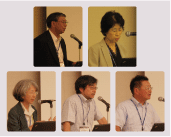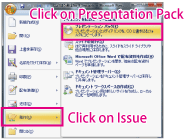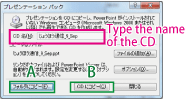|
 |
■ Bioresources information is available at the following URLs
|
 |
 |
■ Announcements
| Information on Training Course for Cellular Slime Molds |
| Date: November 22 (Tue.) - 25 (Fri.), 2011 |
| Place: Second cluster of colleges, Univ. of Tsukuba, Tsukuba |
|
NBRP cellular slime molds: a training course is organized for researchers who plan to use cellular slime mold resources for the first time for their research. Since the course covers independent materials each day, single-day participation is also acceptable. Participation is free of charge. |
|
 |
|
Symposium on Disaster Prevention Measures of NBRP BioResources
Kiyoshi Sato, Director, NBRP Office, National Institute of Genetics
Introduction |
"Once lost, it is difficult to retrieve bioresources." This idea became a real threat after the occurrence of the Tohoku earthquake and tsunami on March 11, 2011. National BioResource Project (NBRP), with the enthusiasm of the leading researchers from various institutions undertaking the project, preserves ample precious resources that have been consolidated over the years. These resources contribute to the progress of life science research. They are assets that will bring future happiness to humankind; thus, they can be considered national treasures.
NBRP organized the "Symposium on Disaster Prevention Measures of NBRP BioResources" on August 25, 2011, in Tokyo. The symposium, which targeted NBRP affiliates, focused on precautions that NBRP needs to take to prevent bioresources, which are national assets, from being damaged by potential disasters. As we learned from the recent massive earthquake, such disasters can occur at any time. |
At the symposium, Mr. Ishii, manager of the Life Science Division, Ministry of Education, Culture, Sports, Science and Technology (MEXT), and Professor Kohara, general manager of the NBRP Steering Committee, delivered greeting speeches (Photo 1). Prof. Kohara then took over the role of host for the subsequent talks. These talks included an invited lecture given by Prof. Noriyuki Kasai, Tohoku University, who was directly impacted by the Tohoku earthquake and tsunami; case studies introduced by researchers who have been administrating resources in the Tsukuba region, which was also damaged by the earthquake; and a case study on Mt. Shinmoedake, which erupted this past January. Mr. Ishii from MEXT explained governmental actions that have been taken to support the creation of backup copies of resources based on information learned from the earthquake. The symposium concluded with a general discussion. |

Photo 1: Prof. Kohara, the host |
|
We requested Prof. Noriyuki Kasai, Director, Institute for Animal Experimentation, Graduate School of Medicine, Tohoku University, to deliver an invited lecture entitled "3.11: Report on the Tohoku earthquake and tsunami—Damages and responses of the Institute for Animal Experimentation"(photo 2).
At Prof. Kasai's institution, mice, rats, guinea pigs, rabbits, dogs, pigs, sheep, and monkeys have been raised and administrated by approximately 40 staff members. Relatively large animals except for mice and rats were hardly harmed by the earthquake. Only 2 of approximately 250 racks for mice and rats, which had been left on a flat shelf that was unfixed, fell over. Most of the racks were earthquake-resistant and thus stayed intact. Prof. Kasai mentioned that his own experiences had taught him the value of securing racks to walls, floors, or ceilings. |

Photo 2: Invited Lecture
Prof. Noriyuki Kasai |
Several tens of mice drowned because the shock of the earthquake caused a part of the automatic water supply nozzles to fail. Other than that, there were apparently no animal casualties. No animals ran away outside the institution because prevention measures against such an occurrence were already in place. In contrast, a lot of equipment fell over in experiment rooms, cleaning rooms, and offices where few antiseismic measures had been taken, and all the oxygen tanks in the operation rooms tipped over. With regard to the recovery of the damaged lifelines, electricity was restored a day after the earthquake and water was also subsequently recovered. The air conditioning was not functioning for two days after the earthquake. The longest recovery time was that for the gas supply, which was not restored until two weeks after the disaster. Experiments could eventually be resumed. In his remarks, Prof. Kasai mentioned several episodes concerning the aftermath of the earthquake. He obtained the mailing lists of the Japanese Association of Laboratory Animal Facilities of the National University Corporations and the Japanese Association for Laboratory Animal Medicine so that he could inform people about emergency measures he was taking to deal with the various problems that he faced. As a result, many people responded to him with extremely useful information that helped him handle the emergency. In addition, sterile floor cloths were supplied to him by the University of Tsukuba.
At the end of the lecture, Prof. Kasai emphasized the following topics in relation to the earthquake:
① Outcome determined by antiseismic reinforcements;② Earthquake manual; ③ Stockpile of forage; ④ In-house power generation; ⑤ Difficulty in seeing through the reconstruction after earthquake; ⑥ Concerns of staff members.
Prof. Kasai had to stay at the university for two weeks after the earthquake, and he took charge of the reconstruction activities. His lecture, which was based on his own experiences, thus strongly impressed all the participants and held their attention. |
Although the resources at only a few institutions were actually affected by the earthquake, cellular slime molds and Oxycomanthus japonicus resources were damaged. In the case studies, researchers at the institutions that had damaged resources reported on the damage and restoration status in addition to preventive measures for resources based on the lessons learned from the earthquake (Photo 3). Damage to infrastructure included stoppages of electricity, water, carbon dioxide gas, and liquid nitrogen in the Tsukuba region, which is located close to the earthquake center. Table 1 presents a summary of the preventive measures that will need to be taken based on the lessons we learned. |
|

Photo 3: Researchers who reported case studies
From the top left: Dr. Obata, Dr. Urushihara, Dr. Kasai, Dr. Inaba, and Dr. Akashi
|
Table 1: Disaster prevention measures to be implemented for each resource
based on the lessons learned from the earthquake
|
| RIKEN BRC
|
Cellular Slime Molds |
| ①Preparation of emergency manual; ②Excavation of water wells; ③Expansion of fuel tanks used as emergency power; ④Installation of a liquid nitrogen generator; ⑤Transfer of bioresources to the backup facility at RIKEN Harima Institute; ⑥Maintenance and preservation of resources at other institutions in the case of an emergency. |
①Backup preservation at geographically distant places (University of Tsukuba and Osaka University); ②Prompt backup preservation; ③Preservation using various methods; ④Development of a crisis-control system. |
| Algae |
Ciona intestinalis & Oxycomanthus japonica
|
| ①Preventive measures against the falling of racks; ②Securing emergency power; ③Completion of backup already performed at the National Institute for Environmental Studies and Kobe University, and an additional backup of passage-cultured cell lines at Hokkaido University that was added after the fall; ④Conserving power by changing lights for culturing algae from fluorescent lights to LED. |
①Wild sea squirt resources have been maintained at the University of Tokyo and Kyoto University in a complementary manner for avoiding critical damages. Although transgenic and inbred sea squirt strains have been maintained at the University of Tsukuba and the University of Tokyo, it is a concern that both institutions may be damaged simultaneously because they both face Sagami Bay. Therefore, Kyoto University was selected as a backup institution. |
|
Lotus japonicus & Glycine max
|
|
| ①Reconstruction of the facility structure so that ashes do not deposit significantly or can be removed easily. |
|
|
Governmental support on resource backup |
Because of the lessons learned from the earthquake, we acknowledge the need to develop a backup system for bioresources as quickly as possible. Mr. Tsuchiya (Photo 4), the Senior Coordinator of MEXT, explained the expedited governmental support plans. It has been planned that the number of projects to be adopted for the “Genome information consolidation program” will decrease only in this fiscal year, and the budget acquired will be allocated to develop a backup system. Offer letters were promptly issued to the organizers of the projects, who submitted demanding papers in order to confirm the changing project plans. |

Photo 4: Mr. Tsuchiya, the Senior Coordinator |
Most institutions that implement NBRP are located in western Japan. Therefore, the overall damages to bioresources caused by the earthquake were relatively small. However, there is a possibility of the occurrence of earthquakes in Tokai, the east southern sea, or the southern sea, in addition to other natural disasters beside earthquakes. Accordingly, preventive measures to preserve bioresources, or national assets, will be an issue that NBRP needs to address with the utmost importance in the future. It has been determined that current budgetary measures will support 17 bioresource projects for creating a backup of resources.
|
|
It will be important to establish measures to manage risk for each bioresource. Such measures include antiseismic reinforcements, in-house generation of electricity and liquid nitrogen, selection of backup institutions, and technical breakthroughs for long-term preservation. The wider the area damaged by a disaster, the more difficult it will be to obtain external support. The bottom line seems to be that administrators must use their own mettle to save the bioresources. |

Conference Room at the Symposium |
|
Trouble Prevention at Presentation |

In recent years, presentation software such as Microsoft PowerPoint (PP) has proved to be indispensable for preparing presentation material. However, despite your willingness to practice presentations at home, you may encounter difficulties if you do not have PP, or if the design of the slides prepared on your own PC is changed upon opening the slides on the PC at the actual presentation.
In this issue of the newsletter, I would like to introduce a function that enables the user to browse slides in a PP-free environment and to prevent the garbling of characters and designs.
This function is included in PP 2003 or later versions for Windows PCs as a standard feature. However, please note that the slides prepared on Windows PCs cannot be browsed on Macintosh computers. Here, we explain the function on the screen of PP 2007.
|

| |
Presentation Pack
The method for using the function is extremely simple. Upon completing the preparation of the presentation slides, please click on "Issue" from the PP menu.
Click on "Presentation Pack" from the opened submenu (Fig. 1).
Upon clicking "Presentation Pack," a dialog box will be displayed (Fig. 2). Please type the name of the CD in the dialog box. A folder with that name is then created in the designated location on the PC or CD.
∗ The folder can be saved at an arbitrary location in the PC if "Copy to Folder" is selected (Fig. 2-A), or on the CD or DVD if "Copy to CD" is selected (Fig. 2-B). |
 Fig. 1
 Fig. 2 |
|
| |
A folder will be made once "Copy to ∼∼" is clicked (Fig. 3). Fifteen files are prepared in the folder. Always save these files as a set. If any of the files are lost, the program cannot be initiated.
Office PowerPoint Viewer is initiated when "PPTVIEW.EXE" in the folder is clicked. Once the user selects a presentation file to be displayed, a slide show of the presentation will begin (Fig. 4). By using this method, even elaborately designed slides are barely jumbled. In addition, the presentation file can be browsed on a PC even if PP has not been installed.
If PP can be used on a PC, the file can be edited by opening the "∼∼.ppt" file directly in the folder. The renewed information can be browsed without saving the file again as a presentation pack. |

Fig. 3

Fig. 4 |
|
--------------------------------------
Please try the method introduced when you have a problem involving PP.
|
(Atsuki Aiba, Genetic Informatics Laboratory, Center for Genetic Resource Information)
|
|